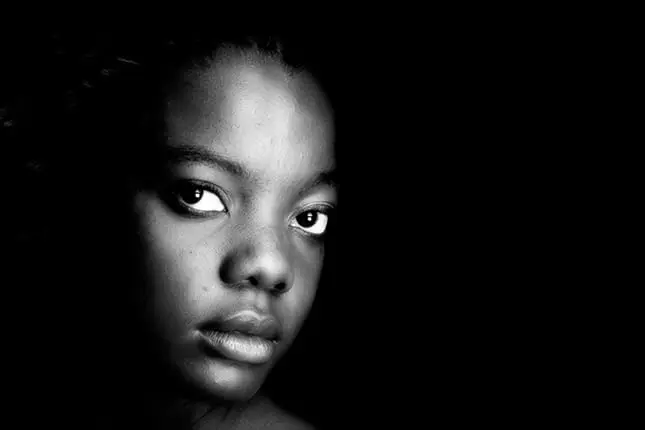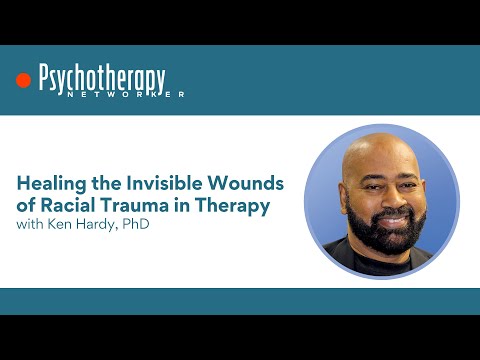During a session back in 2016, Trevor, a student at the high school where I worked, quietly told me he felt suicidal. Assuming that he simply wished to escape painful feelings, I validated the normalcy of his emotional response to school and family stressors. But, with his head in his hands, he started to describe daily experiences directly linked to the structural racism that pervades this country: in the school system, at his job at the grocery store, on the streets where he lived, even in his living room: “Every time I turn on the TV,” he said, “I see what happens to boys like me.”
In my clinical work right now, I’m discovering how to address the disparities I see between the lives of children of color and white children. I saw these disparities in my previous work as a school counselor as well. I’ve witnessed authority figures, like teachers and school staff, respond inadequately, dismissively, and even inappropriately to Black youth who engage in self-harm, like cutting or head banging. Self-harm is not a culturally specific phenomenon, but in the public school system, I’ve watched Black youth being written off because of implicit bias that associates self-harm with white youth culture, overlooking the structural inequities that contribute to Black kids’ feelings of demoralization and hopelessness.
During my graduate training, I chose internships where I could provide free therapy to disadvantaged youth in schools, splitting my time between a public school for younger kids and a charter school for teens. In both schools, I’d often consult with teachers who denied or doubted that so-called bad students who were acting out could feel depressed or suicidal. They failed to realize that an inability to communicate or cope with emotional stress often shows up as misbehavior—meaning that noncompliant students sometimes need our help the most. Instead, I saw the instinct to punish, which I suspect was based on racial stereotypes about students’ lack of innocence and morals.
Many educators I worked with seemed to carry biases that decontextualized their students’ struggles. They often interpreted apathetic, combative, and disruptive behaviors as deliberate malice, rather than byproducts of issues going on at home, like a lack of emotional support because a parent was working two or even three jobs to support the household.
I saw racialized and genderized stereotypes—like the trope that Black girls are sassy and disrespectful—escalate power struggles between Black girls and their teachers. Carissa, a senior slated to graduate in the top five percent of her class, was one victim. Her calculus teacher repeatedly scolded her for talking out of turn and would write her up for talking back when she tried to explain herself. It turns out that Carissa’s “talking out of turn” had been her attempt to help her classmates keep up with the instructor’s fast-paced lectures, and she even tutored them outside of class, essentially doing him a favor.
Carissa was facing the harsh reality that her teacher could see only what he already believed: that her attempts to reason with him were evidence of a tough, abrasive demeanor. Particularly in schools that have a significant cultural gap between teachers and students, Black girls often find their firm but deferential requests for respect misconstrued as demands for control, when, in reality, they’ve been socialized by elders to hold authority figures in high regard. I saw many educators adultify Black girls, as Carissa’s teacher did, by responding to their missteps with disciplinary action that was often harsher than many would consider developmentally appropriate. I never saw the same punitive—even retaliatory—actions taken with white girls, even when they misbehaved.
The Black boys I worked with were similarly misunderstood, sometimes even by their own families. I still remember working with Marshall, a Black boy who was precociously creative, intuitive, and self-reflective. “When was the last time you felt this angry and depressed?” I asked him during one of our sessions.
“Oh, probably when I got hospitalized,” Marshall replied, rolling up a sleeve to show me the keloids from where he’d slashed his wrists. He went on to share that several family members had been teasing him, repeatedly calling him slow and soft. It had pushed him to his limit, he told me.
There’s a common misconception that Black youth self-sabotage by suppressing their pain, that they’re reluctant to open up to family or friends. But Marshall’s case proved otherwise. It showed me that desensitization to Black pain and suffering leads white educators to unconsciously adultify Black children. Sometimes, it leads Black caregivers to inadvertently reinforce the same adultification in the name of tough love.
We need to do better. Research shows that police often misperceive Black boys as older and less innocent than white kids the same age, that employers discriminate disproportionately against teenage Black boys, and that preschool teachers mislabel Black boys as young as four as more disruptive, rather than just energetic. Sadly, this type of institutional, systemic disempowerment drives some children who already suffer from depression not only to overreact defensively, but to harm themselves.
Until advocates, educators, clinicians, policymakers, and researchers acknowledge how society stereotypes Black children as more grown up and forces them to grow up faster, the Black youth suicide epidemic will remain a problem.
Changing the Language
On the whole, our society views suicide as a personal choice. Rarely does it think of suicide as a pervasive structural problem, inextricably linked to social inequities. Even in our field, therapists are rarely trained to recognize risk factors like the structural impediments, stigma, violence, vulnerability, and exploitation that many minoritized groups face because the dominant culture others their identity on the basis of supposed cultural deficit or inferiority.
If we hesitate to name these risk factors for what they are (ableism, capitalism, classism, homophobia, patriarchy, xenophobia, white supremacy), it’s because too many of us are unwilling to examine our own complicity in the oppression of marginalized groups. Talking about our possible role in supporting harmful power structures and the way we benefit from them isn’t an easy conversation to have. It can be uncomfortable, especially for therapists who consider themselves to be allies.
So how, exactly, does reframing risk and confronting our privilege within power structures empower Black youth? I believe it makes them feel less pressure to demonstrate superhuman grit. The word grit has entered the mainstream recently. Grit stresses personal responsibility as the most appropriate pathway out of inequity. Of course, discipline, self-regulation, and dedication are factors in personal success, but the concept is flawed when it comes to addressing centuries of oppression. Grit places the onus on minority groups to become perfect, overachieving, respectable model minorities.
We need to remember that society forces grit on Black children, many of whom have learned to navigate adversity and seemingly insurmountable obstacles from an early age. Perhaps culturally relevant treatment means supplanting the glorification of grit with a strength-based view of how Black children survive despite pervasive anti-Blackness. This would require clinicians working in community-based mental health settings to actually spend time in the communities where their clients live. If your only exposure to your client’s neighborhood is your drive to and from work, any attempt at offering affirming, culturally relevant treatment will be a lost cause.
At best, self-harm and suicide among Black children is misunderstood. At worst, it’s willfully ignored. We can’t afford to misconstrue or misinterpret the pain of children who are already carrying a heavy intergenerational legacy burden. According to JAMA’s Journal of Pediatrics, since the early 2000s, Black children under the age of 13 have been dying by suicide at twice the rate of white children. We have an emergency on our hands—on all our hands—that we can no longer minimize or deny.
PHOTO © SHUTTERUPEIRE
Araya Baker
Araya Baker, M.Phil.Ed, EdM, is a psychotherapist and former school counselor who specializes in the identity formation, socialization, spiritual development, and trauma recovery of minoritized populations. Baker also develops and researches equity-focused assessment tools for counselor education.













